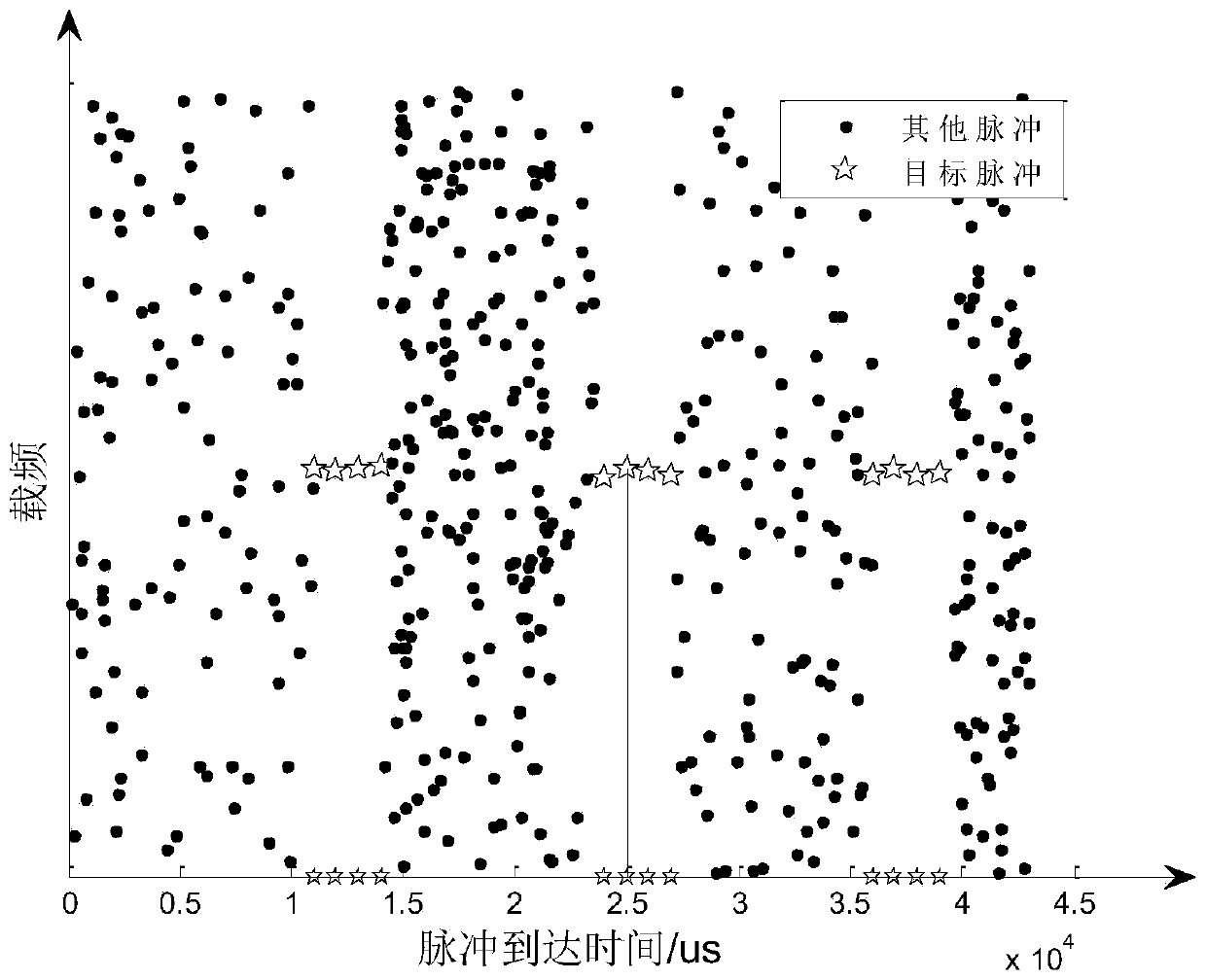Pulse sorting method based on isomorphic sequence
A pulse sorting and sequence technology, applied in the field of signal processing, can solve the problems of low PRI spectrum peak, inability to clearly distinguish interference pulses, low state transition probability, etc., and achieve the effect of rapid screening
- Summary
- Abstract
- Description
- Claims
- Application Information
AI Technical Summary
Problems solved by technology
Method used
Image
Examples
example 1
[0061] Example 1: No pulse loss or interference occurs in the pulse group
[0062] Assuming that the pulse train of the target radiation source appears intermittently and is submerged in noise and interference pulses, set a sequence of 10,000 pulses after pre-sorting by carrier frequency and pulse width, such as figure 2 As shown, each pulse is represented by the time of arrival. The carrier frequency of the pulse changes in a small range. There are 3 scattered pulse groups. Each pulse group contains 4 pulses. The pulse time interval in the group is 1000us. From these 10,000 pulses, 3 pulse groups are detected, for a total of 12 pulses. The method used in the present invention can search for the positions of 4 pulse groups, such as image 3 Shown.
example 2
[0063] Example 2: Loss or interference of pulse group
[0064] Suppose a sequence of 10,000 pulses after pre-sorting by carrier frequency and pulse width, such as Figure 4 As shown, there are two interleaved fixed repetition pulse sequences, the PRI values are 1000us and 827us, and both pulse sequences have pulse loss, and these two sequences need to be extracted from 10,000 pulses. The method used in the present invention can search for two interleaved pulse sequences, such as Figure 5 Shown.
PUM
 Login to View More
Login to View More Abstract
Description
Claims
Application Information
 Login to View More
Login to View More - R&D
- Intellectual Property
- Life Sciences
- Materials
- Tech Scout
- Unparalleled Data Quality
- Higher Quality Content
- 60% Fewer Hallucinations
Browse by: Latest US Patents, China's latest patents, Technical Efficacy Thesaurus, Application Domain, Technology Topic, Popular Technical Reports.
© 2025 PatSnap. All rights reserved.Legal|Privacy policy|Modern Slavery Act Transparency Statement|Sitemap|About US| Contact US: help@patsnap.com



